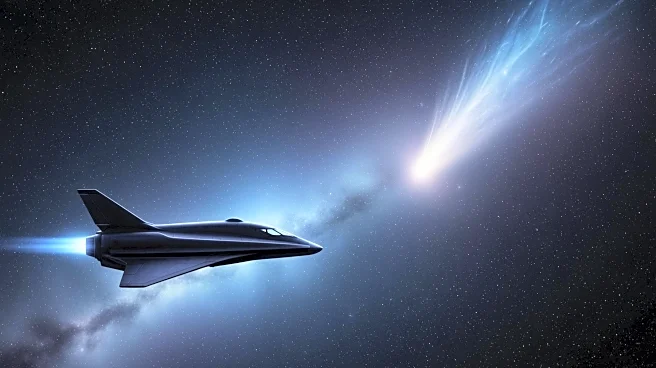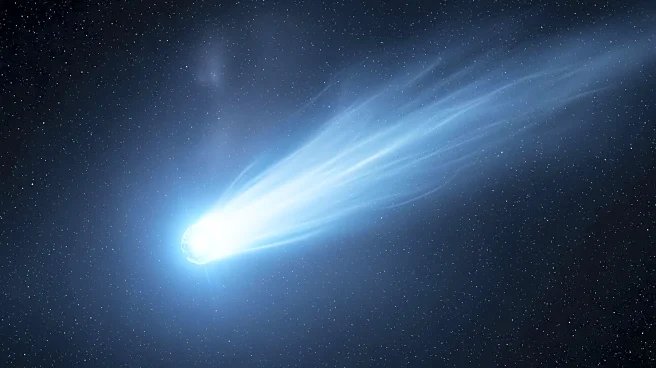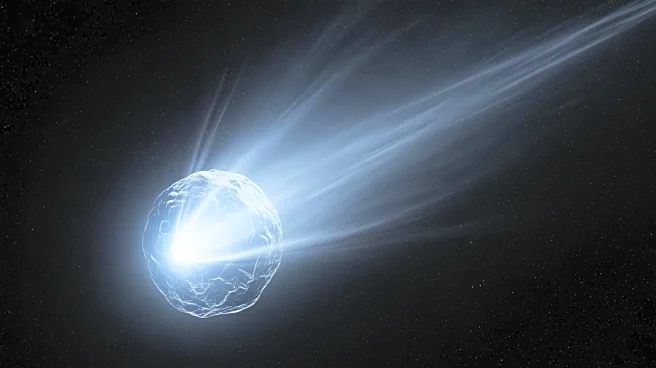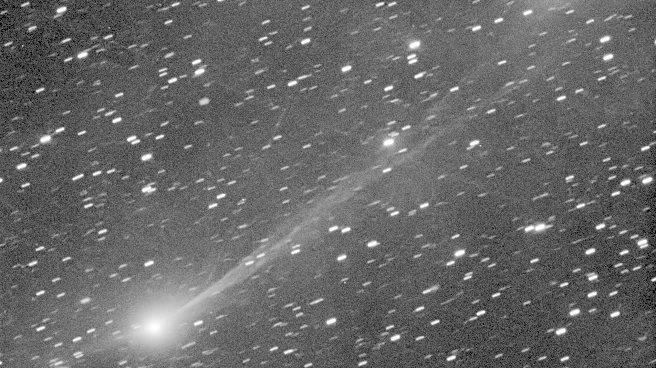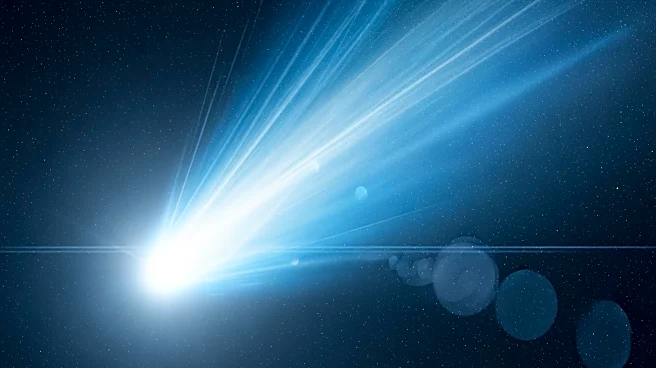What's Happening?
Comet C/2025 K1 (ATLAS), originating from the Oort Cloud, has undergone a dramatic fragmentation event as it approached the Sun. The comet, first spotted in May 2025, broke into three large glowing chunks,
a rare occurrence captured by powerful telescopes, including those used by Gianluca Masi and the Virtual Telescope Project. The fragmentation was first detected in late October and early November, with visible outbursts of light. The intense heat and gravitational forces from the Sun caused the comet to heat up, melt, and lose material, leading to its breakup. This event has garnered significant attention due to the size of the fragments and the clarity of the images captured.
Why It's Important?
The fragmentation of Comet C/2025 K1 (ATLAS) provides a unique opportunity for astronomers to study the composition and behavior of comets as they interact with the Sun's forces. Such events are crucial for understanding the dynamics of celestial bodies originating from the Oort Cloud, a region believed to be the birthplace of many comets. The clarity of the images allows scientists to analyze the structural integrity of comets and the effects of solar heat and gravity. This knowledge can enhance predictions about comet trajectories and potential impacts on Earth, contributing to the broader field of astrophysics and space exploration.
What's Next?
The Virtual Telescope Project is offering live broadcasts of the comet's progress, allowing the public to witness the celestial drama. On November 25, C/2025 K1 (ATLAS) will make its closest approach to Earth, providing further observation opportunities. This event may lead to increased interest and funding for comet research, as scientists aim to understand the implications of such fragmentation events. The data collected could inform future missions to study comets and their potential impact on planetary systems.
Beyond the Headlines
The fragmentation of C/2025 K1 (ATLAS) highlights the fragile nature of comets and the powerful forces exerted by the Sun. This event underscores the importance of monitoring celestial bodies that could pose a threat to Earth. It also raises questions about the long-term stability of the Oort Cloud and the potential for more comets to enter the inner solar system. The public's engagement through live broadcasts may foster greater interest in astronomy and space science, encouraging educational initiatives and citizen science projects.



